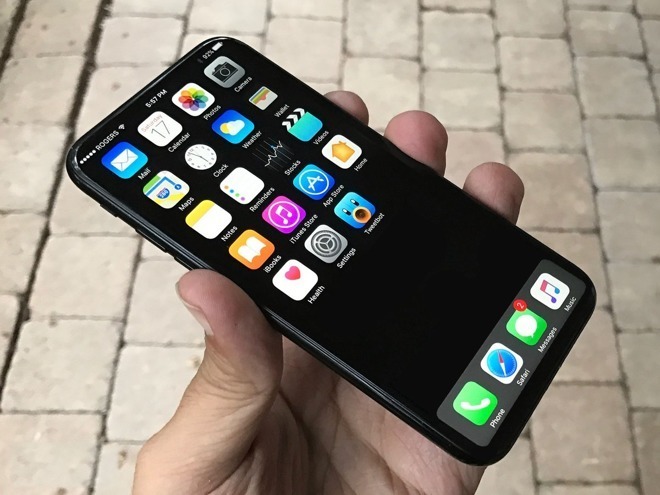The most recent speculation is that Apple is planning to standardize OLED – organic light-emitting diode – screens for all upcoming iPhone models starting the second half of 2018. OLED displays can be seen in premium iPhones released this year (iPhone 8), while the other two – iPhones 7s and iPhone 7s Plus – will continue to have LCD displays. iPhone 8 might face a supply crunch in the initial phase and eventually set to increase in the first quarter of 2018.
The use of OLED screens will mark a big change to Apple in the lineup of future releases. Apple will continue to sell the LCD version of iPhone till early 2019 or so.
New reports confirm that Apple has is very close to production on the new iPhone 8 with OLED, which could evolve between now and the time it hits full production levels. Apparently, the team is quite flexible in accommodating market forces and component quality at this point.
Looks like a big challenge for the OLED production equipment industry, especially for Samsung, to meet the huge demand if Apple starts using OLED displays in all new iPhone starting the second half of 2018. Taipei-based Yuanta Investment Consulting said the shipments of new iPhone models in the second half of 2017 is expected to be around 90 million, out of which fifty percent will be the OLED handsets.
After Samsung released OLED-featured smartphones in 2010, the smartphone industry has seen a sudden rise of the OLED. It is better than the LCD – Liquid Crystal Display – technology in many ways, including having comparatively sharper color contrast.
iPhone 8 is the first Apple iPhone to sport an OLED display, and their entire supply for this year will come from Samsung. However, things are unclear if Samsung will remain an exclusive supplier, as Apple generally prefers more than one supplier for a single component. Moreover, LG is also ramping up its OLED production capacities and will be making Google Pixel 2 XL with OLED screens.
The problem is that there are barely a handful of companies with the technology to mass-produce OLED panels, so it’s possible that we may see an OLED display shortage for the smartphone industry in 2018 when nearly all premium devices are likely to switch completely to OLED.
A report from Samsung says that the company is planning to expand its production capacity for flexible OLED panels to 135,000 per month by the fourth quarter by adding new lines in its A3 factory, while the A4 factory will be set to produce 60,000 more panels per month by the third quarter of 2018.
A report from Bloomberg says that Apple will be introducing a 3D module for face recognition on the front of the iPhone 8. This feature is said to unlock the device using the user’s face even when the device is lying flat on the surface. Also, acts as a layer of security for mobile payments made through the Company’s Apple Pay service.
The forecast is that Samsung is bound to deliver about 70 million OLED panels to the Apple, while the earlier report says it will only be able to supply 3-4 million units to Apple before the launch of iPhone 8. That could mean Apple consumers may find it difficult to get their hands on the premium model as soon as it’s out. Pre-order mania, anyone?



